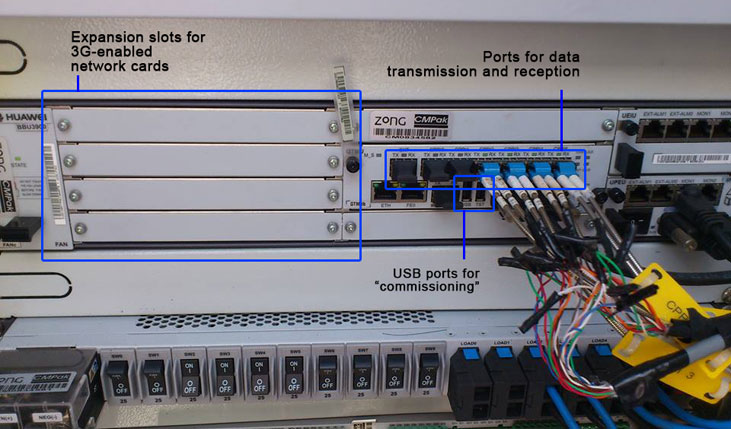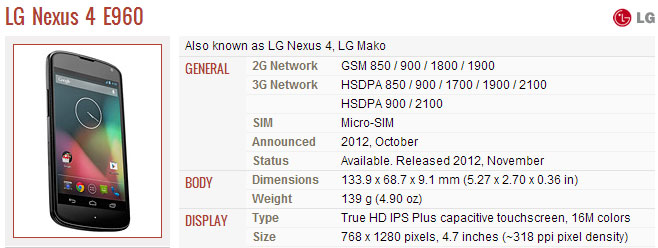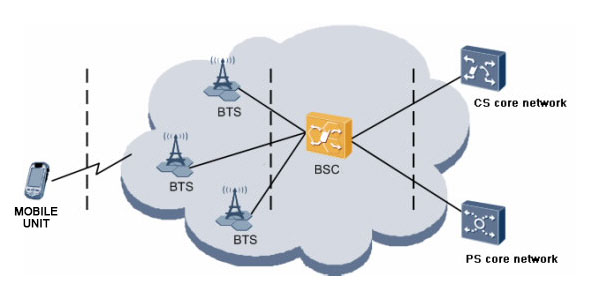From a telecom service providers’ point-of-view, a transition from 2G to 3G (Next Generation Mobile Services) is not as complicated as some might think. To understand it, consider a few technical terms:
A Site is the location where you see communication towers of telecom companies. Sites relay all the communications from the areas they cover (cells) to a larger facility which holds Base Station Controller (BSC). At a Site, a special piece of equipment known as BTS (Base Transceiver Station) is installed which facilitates the communication between that Site and the network using microwave link. A BTS has network cards plugged in its slots, which are configured by engineers to optimally handle the network’s communication over that site.
If a BTS has been made 3G services-compatible by its manufacturer, extra slots exist in it for 3G-supported network cards. Engineers add these extra controller cards in the BTS slots and configure them through a process called Commissioning, which is roughly an equivalent of burning software onto the cards. Moreover, the microwave links between Sites and BSCs, and BSC’s software are also upgraded to support the heavy data traffic, and that’s about it. While things are not that simple in whole, this is the principal part in the process and it makes a Site support 3G communication between users’ mobile units and the network.

A Huawei-made BTS unit currently in use at Zong’s sites in Karachi. Major portions have been labelled.
Transition to 4G, however, is quite more complicated and it involves a lot of architecture planning and employment of extra infrastructure like optic fiber cables, among other complications.
On the users’ side, only a compatible smartphone which supports the 3G/4G frequency spectrum will be required in order to enjoy the next-generation mobile services. Most of the current smartphones support a variety of spectrums. If you want to check if your smartphone supports the spectrums that will be used by telecom operators in Pakistan (2100 MHz for 3G and 1800 MHz for 4G), head over to GSMArena.com and search for your smartphone model. In the specifications list, you will see the supported spectrums under the heading of “General”. Nexus 4, for example, supports 2100 MHz spectrum for 3G, but it doesn’t have a support for 4G.

Contrary to the popular belief, there is no such thing as a 3G-ready SIM card. All current SIM cards will work for utilizing the 3G/4G services as the settings required for using NGMS can be updated from operator’s side on-the-go.
Employment Outlook
An estimate from PTA implies that over 900,000 direct and indirect jobs will be created till 2019 as a result of 3G/4G auction in the country. The auction is undoubtedly supposed to bring a monumental change in the telecom industry, and the figures presented in this regard might seem a bit overstated in a glance but make sense when seen in a broader view. As described in the section above, shifting a network from 2G to 3G does not involve any rocket science but a transition to 4G, however, is another matter entirely which requires manpower, expertise and time of a greater measure. Since there is still time in the widespread implementation of 4G services, so there won’t be a significant number of openings in telecom companies for now, but it doesn’t mean that there won’t be any at all.
Some of the fields in telecom industry that could, sooner or later, see job openings include:
- BSS/RF Engineers, who plan the area coverage of a network’s sites and evaluate other involved factors such as location, position and height of the communication towers, etc.
- Microwave Planning Engineers, who plan the link establishment between BSC and BTS, etc.
- Drive-testing Engineers, who use TEMS and other related equipment to test tower’s operability, signal strength and other factors.
The auction can serve the country’s engineers in other, indirect ways as well. So far, due to the lack of NGMS in Pakistan, engineers were only trained in 2G technologies and there were very few and expensive options for them to secure telecom sector jobs in other countries as a number of foreign countries already have 3G/4G services in place, rendering the skills of Pakistani engineers obsolete. Now, however, thanks to the recently-conducted auction, a major shift in the industry will result in the conduction of training programs, workshops, seminars and other events related to 3G/4G technologies. Moreover, an increasing number of Pakistani engineers would become qualified enough to apply for high-ranking telecom-related jobs in foreign and developed countries after gaining experience through internships, jobs, and training programs locally at a low cost.
As the awareness and usage of NGMS expands, the number of domains and businesses to benefit from the auction will also increase, like marketing, sales and services, local equipment manufacturers and distributors, etc.













